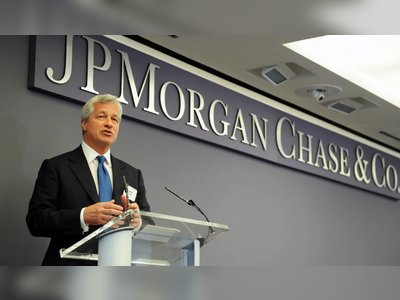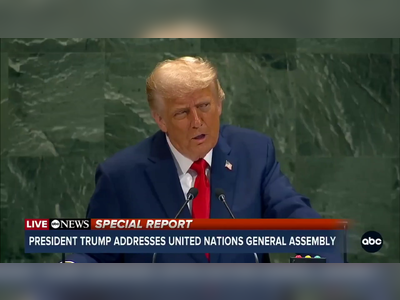Advancements in Autonomous Vehicle Technology Showcased by Bosch Leadership
Recent advancements in self-driving technology highlight significant developments in safety and business models, with Bosch leaders emphasizing the potential for life-saving innovations.
In a recent interview, László Palkovics, the Hungarian government official responsible for artificial intelligence, noted that predictions made by experts at the University of California, Berkeley, in the 1990s concerning the coexistence of traditional and autonomous vehicles by 2100 have been exceeded, with this milestone expected to be achieved by 2025. This underscores the rapid evolution of self-driving technology, a sentiment echoed by István Szászi, the head of Bosch's Adria region, who confirmed that Level 4 autonomous driving technology is already in practice in Germany and on Hungarian test tracks, albeit not yet on public roads.
Level 4 autonomous vehicles can operate on certain routes without human intervention, although a safety driver must still be present.
Szászi explained that these systems have been effectively operational but are not allowed on open roads as of yet.
He highlighted the critical issue of business models, questioning who will purchase these technologies.
He speculated that individual car owners are unlikely to make such investments, suggesting instead that it would be parking lot operators or businesses with large vehicle fleets, such as taxi companies.
Szászi pointed to California, where robotaxis are currently in operation, demonstrating a move toward practical applications of autonomous transport.
According to Szászi, the primary aim behind developing both autonomous technology and smart infrastructure is to protect human lives.
He referenced Europe's long-standing goal of reducing road fatalities to zero—an ambitious target that remains a work in progress, with significant reductions being the key focus.
Szászi detailed the capabilities of autonomous systems in enhancing road safety through their integrated sensors, cameras, radars, and lidars, which continuously monitor surroundings and can react to potential hazards.
Unlike human drivers, these systems do not fatigue or get distracted and consistently adhere to traffic rules.
He drew comparisons to the Electronic Stability Program (ESP), which dramatically reduced fatal accidents by preventing vehicles from losing stability during abrupt maneuvers, suggesting that similar benefits could emerge from autonomous technologies.
The necessity for improved infrastructure to facilitate vehicle-to-road communication was stressed, along with the importance of cloud-based technology and artificial intelligence algorithms in the automotive industry, all aimed at enhancing traffic safety and reducing fatal accidents.
Palkovics has previously emphasized this objective in his discussions about the European Union's 'Vision Zero' initiative, aiming for no road fatalities by 2050. Szászi confirmed his collaboration with Palkovics in pursuing shared goals to save lives through improved traffic safety and technology.
However, Szászi warned that achieving these life-saving improvements is contingent upon infrastructure development, particularly in constructing smart roads, which are currently lagging in Europe compared to other parts of the world, notably China.
He highlighted the capabilities of smart roads to provide cars with information not just about their immediate vicinity but also from several kilometers ahead, allowing for significantly enhanced safety and operational efficiency.
In contrast, he noted that while projects to build extensive smart road networks are advancing rapidly in China, Europe lacks similar developments, prompting concerns over competitiveness.
The market for autonomous technology is currently experiencing a slowdown, as revealed by Szászi, who reported a noticeable dropout of customers who were previously interested in procuring Level 4 or Level 5 autonomous technologies.
This shift is striking given the heightened interest that had been observed only a few years prior.
He recounted how American business partners had previously expressed a desire to leverage autonomous trucks to address driver shortages, a solution that saw diminishing interest and has now largely vanished from discussions.
Szászi stated, "Despite our readiness to serve prospective clients, there seems to be a lack of businesses willing to invest in autonomous technology for their fleets." He attributed this to heightened market caution surrounding investment returns amid a challenging economic backdrop characterized by supply chain disruptions from the COVID-19 pandemic, component shortages, and growing geopolitical tensions, which have compounded existing uncertainties.
Chinese automakers have rapidly capitalized on market opportunities, often introducing new products at a swift pace and lower cost, thus transforming market dynamics and contributing to cautiousness among investors.
Despite the launch of robotaxi services in California, clarity on the profitability and public confidence in such services remains elusive, as user trust is vital for the acceptance of autonomous technologies.
Szászi explained that firms are adopting a wait-and-see approach as they confront an uncertain financial landscape, prompting them to scale back investments in questionable return innovations.
He articulated that while economic challenges are undoubtedly impacting growth in the sector, they also act as a natural reaction to shifting market realities.
On the topic of trade tariffs imposed by the EU in relation to Chinese automakers, Szászi articulated his firm stance that tariffs do not present viable solutions, instead inflating domestic prices due to protectionist policies.
He urged a reevaluation of tariff strategies, arguing that while they may appear to protect domestic industries, they stifle competition and innovation, ultimately increasing costs for consumers.
Szászi further remarked on the instability created by fluctuating tariff regulations, which complicate long-term business planning.
He suggested that Europe would benefit from a balanced approach to competition, emphasizing collaborative technological advancement rather than isolation.
Fostering interdependence could enhance innovation on both sides, opening avenues for beneficial partnerships.
Looking at the global landscape, Szászi urged European companies to embrace sustained competition, stressing its fundamental role in driving technological progress—a sentiment demonstrated by the evolution of the electric vehicle market.
As American manufacturers showcased viable electric vehicles despite skepticism, traditional European producers felt compelled to follow suit.
He indicated that similar innovation pressures could arise as Chinese manufacturers continue to penetrate the European market.
Szászi oversees one of Bosch's largest development centers in Europe, located in Budapest, with over 3,400 engineers dedicated to automotive R&D. He emphasized that Hungary's contributions to self-driving technology development are on par with those in Germany and the U.S., attributing significant collaborative projects between Hungarian, German, and American teams.
He recalled a joint initiative with Mercedes in California focusing on robotaxi technology, reinforcing the capacity of Hungarian engineers to engage in cutting-edge automotive initiatives.
Szászi's background includes a long tenure at Bosch, where he progressed from project engineer to the leader of the Budapest Development Center, further establishing Hungary's role in automotive innovation.
He advocates for elevating the relationship between academic institutions and industries in Hungary to foster collaborative efforts essential for navigating contemporary challenges in the automotive sector, particularly in artificial intelligence applications.
He unpacks the differences between the American and Hungarian academic-industry ecosystems, highlighting the necessity for Hungarian universities to better align with industrial needs to cultivate valuable, real-world contributions.
Szászi stresses the need for a shift in mindset among academic professionals, emphasizing the importance of effectively communicating the societal and economic value of their work to industrial partners.
As the automotive and technology landscapes rapidly evolve, Szászi's insights reflect ongoing developments and the need for a cohesive strategy to leverage Hungary's strengths in autonomous vehicle technology.
Level 4 autonomous vehicles can operate on certain routes without human intervention, although a safety driver must still be present.
Szászi explained that these systems have been effectively operational but are not allowed on open roads as of yet.
He highlighted the critical issue of business models, questioning who will purchase these technologies.
He speculated that individual car owners are unlikely to make such investments, suggesting instead that it would be parking lot operators or businesses with large vehicle fleets, such as taxi companies.
Szászi pointed to California, where robotaxis are currently in operation, demonstrating a move toward practical applications of autonomous transport.
According to Szászi, the primary aim behind developing both autonomous technology and smart infrastructure is to protect human lives.
He referenced Europe's long-standing goal of reducing road fatalities to zero—an ambitious target that remains a work in progress, with significant reductions being the key focus.
Szászi detailed the capabilities of autonomous systems in enhancing road safety through their integrated sensors, cameras, radars, and lidars, which continuously monitor surroundings and can react to potential hazards.
Unlike human drivers, these systems do not fatigue or get distracted and consistently adhere to traffic rules.
He drew comparisons to the Electronic Stability Program (ESP), which dramatically reduced fatal accidents by preventing vehicles from losing stability during abrupt maneuvers, suggesting that similar benefits could emerge from autonomous technologies.
The necessity for improved infrastructure to facilitate vehicle-to-road communication was stressed, along with the importance of cloud-based technology and artificial intelligence algorithms in the automotive industry, all aimed at enhancing traffic safety and reducing fatal accidents.
Palkovics has previously emphasized this objective in his discussions about the European Union's 'Vision Zero' initiative, aiming for no road fatalities by 2050. Szászi confirmed his collaboration with Palkovics in pursuing shared goals to save lives through improved traffic safety and technology.
However, Szászi warned that achieving these life-saving improvements is contingent upon infrastructure development, particularly in constructing smart roads, which are currently lagging in Europe compared to other parts of the world, notably China.
He highlighted the capabilities of smart roads to provide cars with information not just about their immediate vicinity but also from several kilometers ahead, allowing for significantly enhanced safety and operational efficiency.
In contrast, he noted that while projects to build extensive smart road networks are advancing rapidly in China, Europe lacks similar developments, prompting concerns over competitiveness.
The market for autonomous technology is currently experiencing a slowdown, as revealed by Szászi, who reported a noticeable dropout of customers who were previously interested in procuring Level 4 or Level 5 autonomous technologies.
This shift is striking given the heightened interest that had been observed only a few years prior.
He recounted how American business partners had previously expressed a desire to leverage autonomous trucks to address driver shortages, a solution that saw diminishing interest and has now largely vanished from discussions.
Szászi stated, "Despite our readiness to serve prospective clients, there seems to be a lack of businesses willing to invest in autonomous technology for their fleets." He attributed this to heightened market caution surrounding investment returns amid a challenging economic backdrop characterized by supply chain disruptions from the COVID-19 pandemic, component shortages, and growing geopolitical tensions, which have compounded existing uncertainties.
Chinese automakers have rapidly capitalized on market opportunities, often introducing new products at a swift pace and lower cost, thus transforming market dynamics and contributing to cautiousness among investors.
Despite the launch of robotaxi services in California, clarity on the profitability and public confidence in such services remains elusive, as user trust is vital for the acceptance of autonomous technologies.
Szászi explained that firms are adopting a wait-and-see approach as they confront an uncertain financial landscape, prompting them to scale back investments in questionable return innovations.
He articulated that while economic challenges are undoubtedly impacting growth in the sector, they also act as a natural reaction to shifting market realities.
On the topic of trade tariffs imposed by the EU in relation to Chinese automakers, Szászi articulated his firm stance that tariffs do not present viable solutions, instead inflating domestic prices due to protectionist policies.
He urged a reevaluation of tariff strategies, arguing that while they may appear to protect domestic industries, they stifle competition and innovation, ultimately increasing costs for consumers.
Szászi further remarked on the instability created by fluctuating tariff regulations, which complicate long-term business planning.
He suggested that Europe would benefit from a balanced approach to competition, emphasizing collaborative technological advancement rather than isolation.
Fostering interdependence could enhance innovation on both sides, opening avenues for beneficial partnerships.
Looking at the global landscape, Szászi urged European companies to embrace sustained competition, stressing its fundamental role in driving technological progress—a sentiment demonstrated by the evolution of the electric vehicle market.
As American manufacturers showcased viable electric vehicles despite skepticism, traditional European producers felt compelled to follow suit.
He indicated that similar innovation pressures could arise as Chinese manufacturers continue to penetrate the European market.
Szászi oversees one of Bosch's largest development centers in Europe, located in Budapest, with over 3,400 engineers dedicated to automotive R&D. He emphasized that Hungary's contributions to self-driving technology development are on par with those in Germany and the U.S., attributing significant collaborative projects between Hungarian, German, and American teams.
He recalled a joint initiative with Mercedes in California focusing on robotaxi technology, reinforcing the capacity of Hungarian engineers to engage in cutting-edge automotive initiatives.
Szászi's background includes a long tenure at Bosch, where he progressed from project engineer to the leader of the Budapest Development Center, further establishing Hungary's role in automotive innovation.
He advocates for elevating the relationship between academic institutions and industries in Hungary to foster collaborative efforts essential for navigating contemporary challenges in the automotive sector, particularly in artificial intelligence applications.
He unpacks the differences between the American and Hungarian academic-industry ecosystems, highlighting the necessity for Hungarian universities to better align with industrial needs to cultivate valuable, real-world contributions.
Szászi stresses the need for a shift in mindset among academic professionals, emphasizing the importance of effectively communicating the societal and economic value of their work to industrial partners.
As the automotive and technology landscapes rapidly evolve, Szászi's insights reflect ongoing developments and the need for a cohesive strategy to leverage Hungary's strengths in autonomous vehicle technology.
AI Disclaimer: An advanced artificial intelligence (AI) system generated the content of this page on its own. This innovative technology conducts extensive research from a variety of reliable sources, performs rigorous fact-checking and verification, cleans up and balances biased or manipulated content, and presents a minimal factual summary that is just enough yet essential for you to function as an informed and educated citizen. Please keep in mind, however, that this system is an evolving technology, and as a result, the article may contain accidental inaccuracies or errors. We urge you to help us improve our site by reporting any inaccuracies you find using the "Contact Us" link at the bottom of this page. Your helpful feedback helps us improve our system and deliver more precise content. When you find an article of interest here, please look for the full and extensive coverage of this topic in traditional news sources, as they are written by professional journalists that we try to support, not replace. We appreciate your understanding and assistance.










